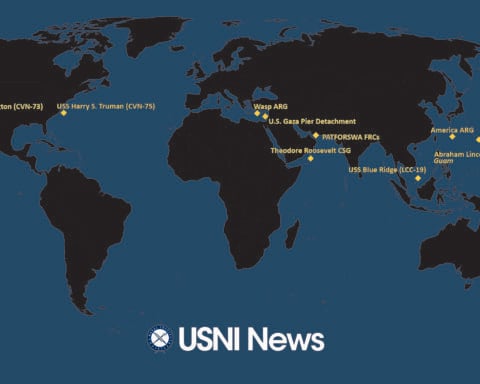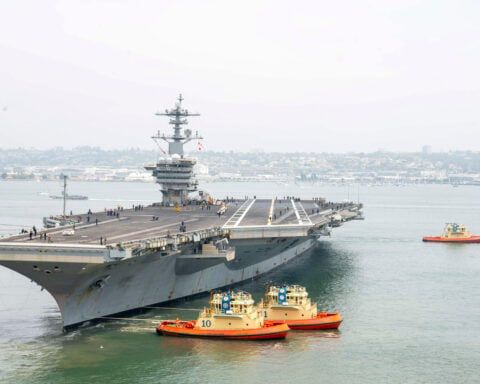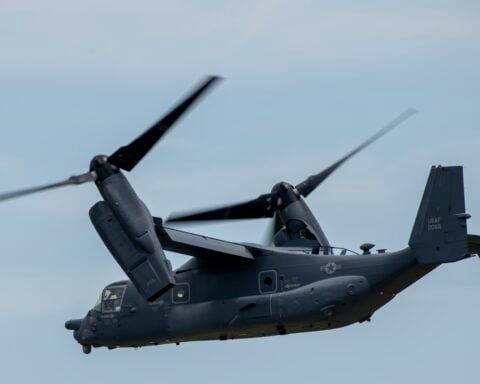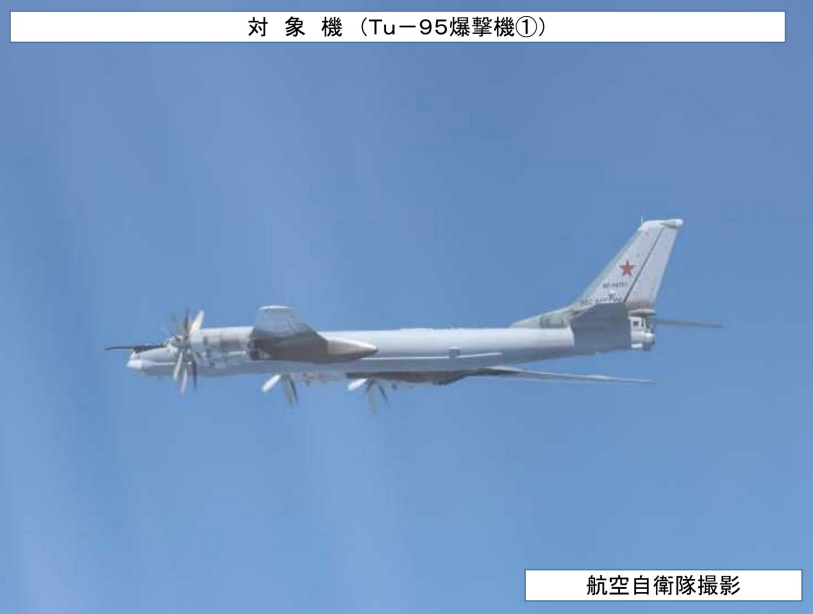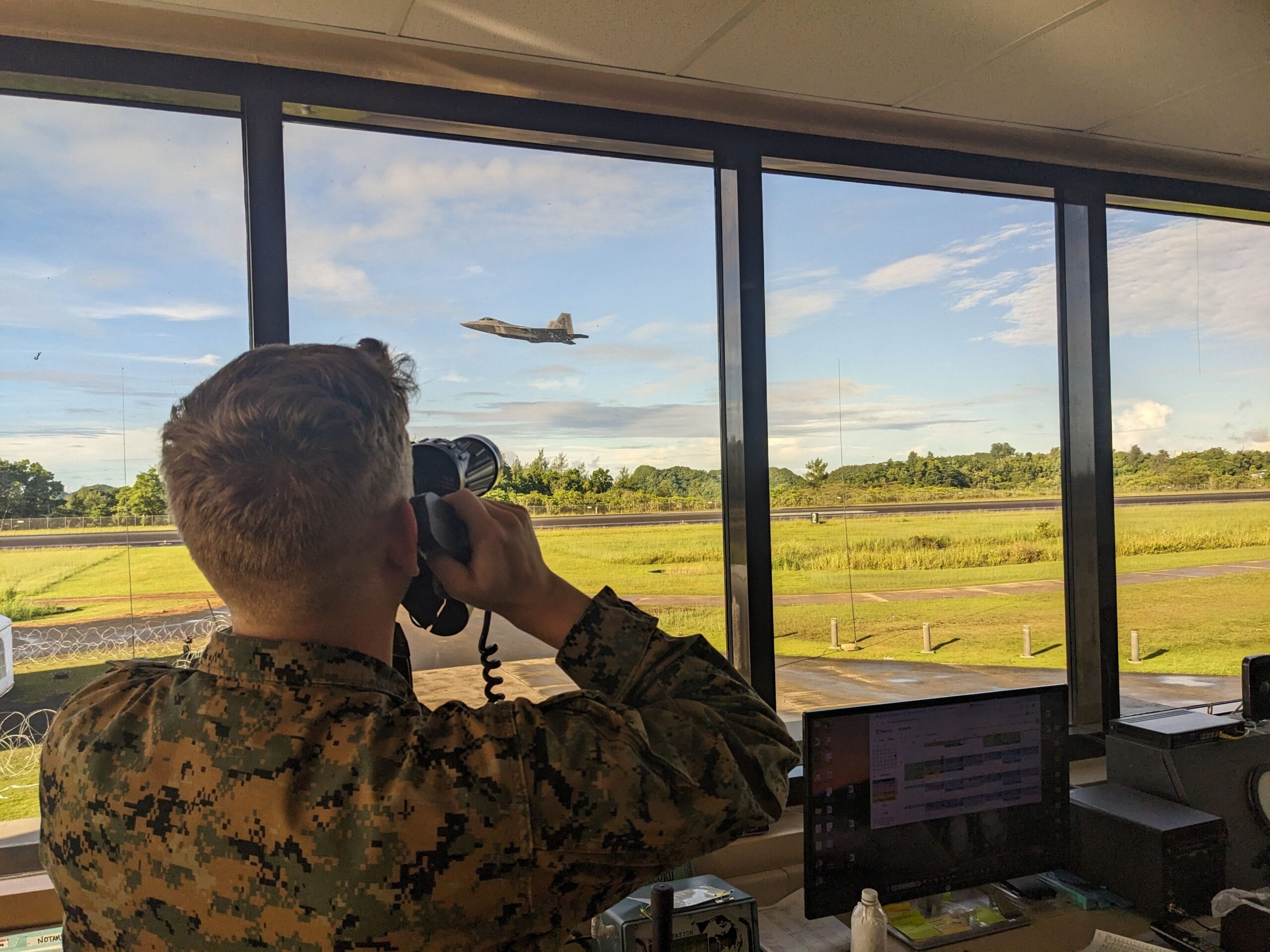
How to meet the logistics needs of Marines and sailors in an Indo-Pacific conflict is a major question in how the U.S. could fight in the region and one that seasoned logistical leaders within I Marine Expeditionary Force began to tackle during last month’s Valiant Shield exercise.
The joint, biennial exercise that ran June 7 to June 18 played out on the South Pacific island nation of Palau, Guam, and the Commonwealth of the Northern Mariana Islands and at sea across the Navy’s Marianas Island Range Complex. This year marked its first time as a multinational exercise, and the exercise force included about 4,000 from Japan’s self-defense units.
From Palau, Combat Logistics Regiment 17 formed as a forward Marine logistics group for I MEF (Forward), which was in the Philippines supporting other Marine air-ground task force training in the region. Its leaders emphasized integration and interoperability among U.S. forces and foreign partners while they worked through command-and-control at sea, on land and in the air, space and cyberspace.
“The joint force needs to be up and running, so they can plug into those services and immediately get into their mission without having to do all the start things, [which] we’re trying to take off of their plate,” Col. Matthew Mulvey, commander of the Camp Pendleton, Calif.-based regiment, told USNI News in a recent phone interview from Palau.
“We are seeing our skills integrated across all the warfighting functions – in all domains – and that is something that a CLR does not typically do,” Mulvey said. “We have been augmented significantly to help us get to where we need to be to be a joint force enabler. Ultimately, what we’re trying to do is enhance naval campaigning.”
For Valiant Shield, CLR-17 exercised four main functional roles: communications integrator, base operating services and integration provider, senior airfield authority, and senior port authority. So, Mulvey and his staff led integrated joint command, control and communication systems for the exercise force, controlled movements including Air Force C-17 transports and F-22 Raptor fighter aircraft and naval ships and vessels at a key port, and managed the myriad tasks and functions to support base operations so the joint forces could focus on their missions.
At Palau, about 800 miles southwest of Guam, about 600 Marines, sailors and civilians with CLR-17 provided command and control for participating units. These included Camp Pendleton, Calif.-based I MEF, Japan-based 1st Marine Aircraft Wing and West Coast-based 3rd Marine Aircraft Wing; the Army’s 3rd Multi-Domain Task Force, a Pacific theater-focused unit; the Air Force’s Virginia-based 27th Fighter Squadron, which flies the F-22 Raptor fighters, and 556th Test and Evaluation Squadron from Nevada, which operates unmanned aircraft; and the Navy’s Port Hueneme, Calif.-based Underwater Construction Team 2 and Guam-based 30th Naval Construction Regiment.
This year’s exercise, Mulvey said, “is the laboratory for us to hone our skills and improve our abilities to operate as part of the greater joint force.”
While the service’s current playbook, the Tentative Manual for Expeditionary Advanced Base Operations, “laid out some of this… for [what] we’re trying to accomplish here, there’s no playbook,” he said. While they studied the concepts as envisioned, he noted, “there’s not a whole lot of after-action reports to reference and say, this is how it was done and this is where we need to improve or sustain from previous evolutions. We hope to contribute to that. But by no means did we get everything right, and there’s a lot of areas on which to improve.”
“We think there’s … a joint communications enabling capability that comes in to help us better integrate the various communications systems that’ll be coming in and out of this area,” he added.
Integrating the force
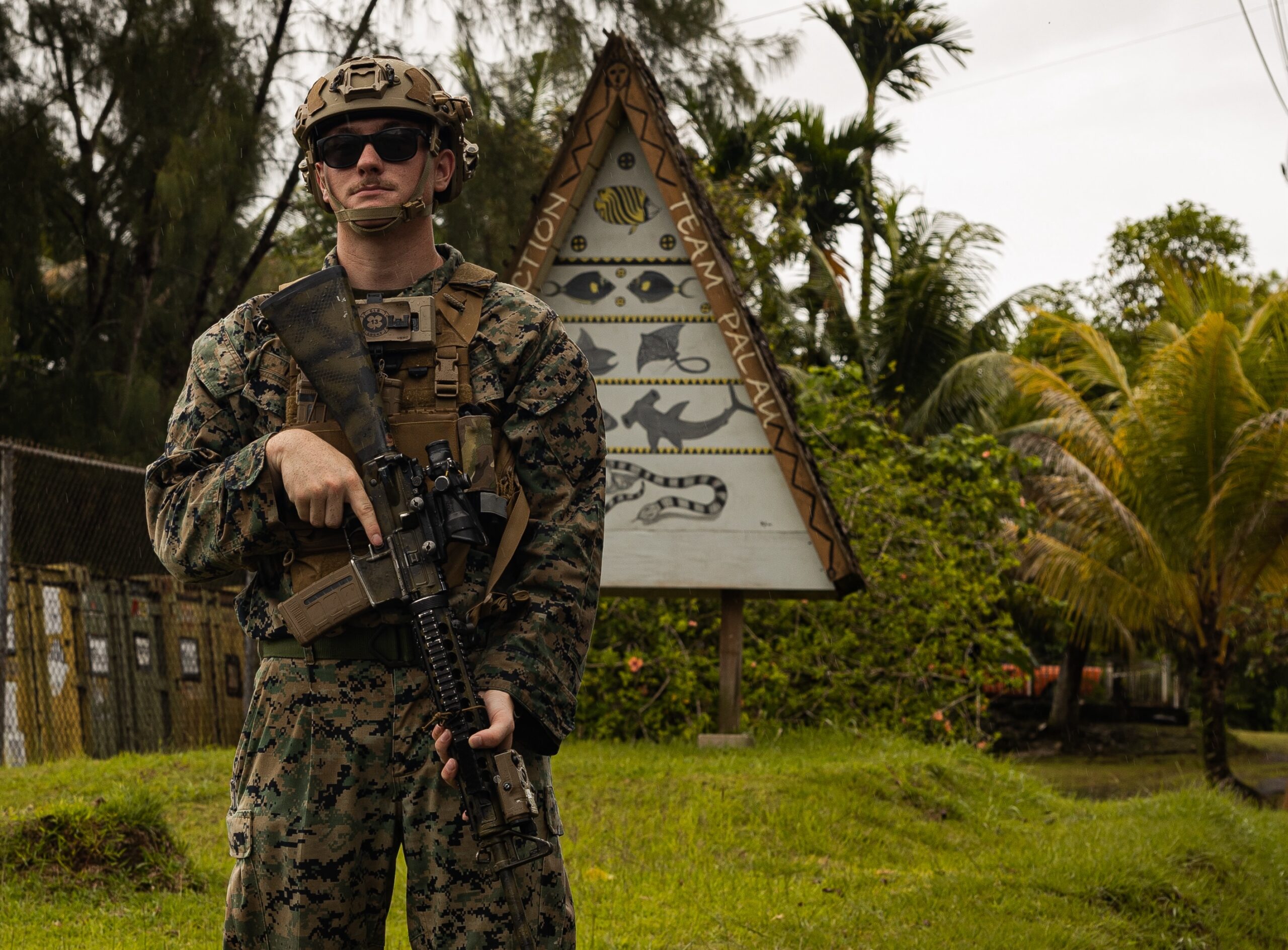
A key task at Palau was integrating joint communications and enhancing command-and-control systems across the exercise force, and CLR-17, as MLG (Forward), began to chip away at seeing what that mission and support might look like in a real, future maritime conflict.
During the exercise, a Tactical Air Control Element from Marine Air Control Group 18 provided “an exquisite radar” that a combat logistics battalion usually lacks, Mulvey said, providing greater overall situational awareness. While other joint force systems may have been less familiar, “we were able to serve as the integrator for communications … so we had a really good understanding of what forces were on deck (and) some of their requirements.”
One of the joint forces, the Army’s 3rd Multi-Domain Task Force “brought sensors and capabilities that we were able to zap into our headquarters … that a combat logistics regiment simply doesn’t have,” he noted.
Soldiers with 3rd MDTF fired precision strike missiles from their unmanned, autonomous multidomain launcher (AML) at Palau’s airport toward the target – the decommissioned amphibious ship USS Cleveland – some 40 miles away during a scheduled sinking exercise. “The partnership between 3rd MDTF and the AML team represents a significant modernization milestone,” said Capt. John Kenny, 3rd MDTF’s officer-in-charge, said in a June 20 I MEF news story. “Integrating emerging technologies into palpable deterrence on the edge is exactly how MDTFs bring value to the joint force.”
An exercise in itself during Valiant Shield was in getting participating U.S. personnel, supplies and equipment into the vastly dispersed battlespace. Refueling stops were requirements for some Air Force transport planes supporting forces, for example.
“In a limited capacity that the Marine Corps can do – it’s not something we always do – how do we help folks with their arrival and with their assembly to any key maritime terrain in the Pacific?” Mulvey said.
CLR-17 served as the senior airfield authority, and 3rd MAW units that composited under Marine Wing Support Squadron 373 provided air traffic control, communications and aviation ground support. Marine ATC mobile teams, for example, controlled civilian and military aircraft at Palau’s international airport. “The MMT provides the initial push, establishing the runway or landing zone,” 2nd Lt. John Fauntleroy, who led a Marine ATC team, said in a June 24 I MEF news story. “We can sustain our operations without resupply for 72 hours.”
Valiant Shield opened the aperture on what a joint force enabler needs to move and support units in a larger Indo-Pacific conflict – and it’s different than when supporting a MAGTF, Mulvey said. The mission might require something like establishing a joint movement control center “for all the forces that are flowing in and out of this key maritime terrain,” he noted, and leveraging a jointly run Pacific deployment operations center that can source transportation methods and information “of who’s coming in and out of this key maritime terrain.”
Working through logistics needs
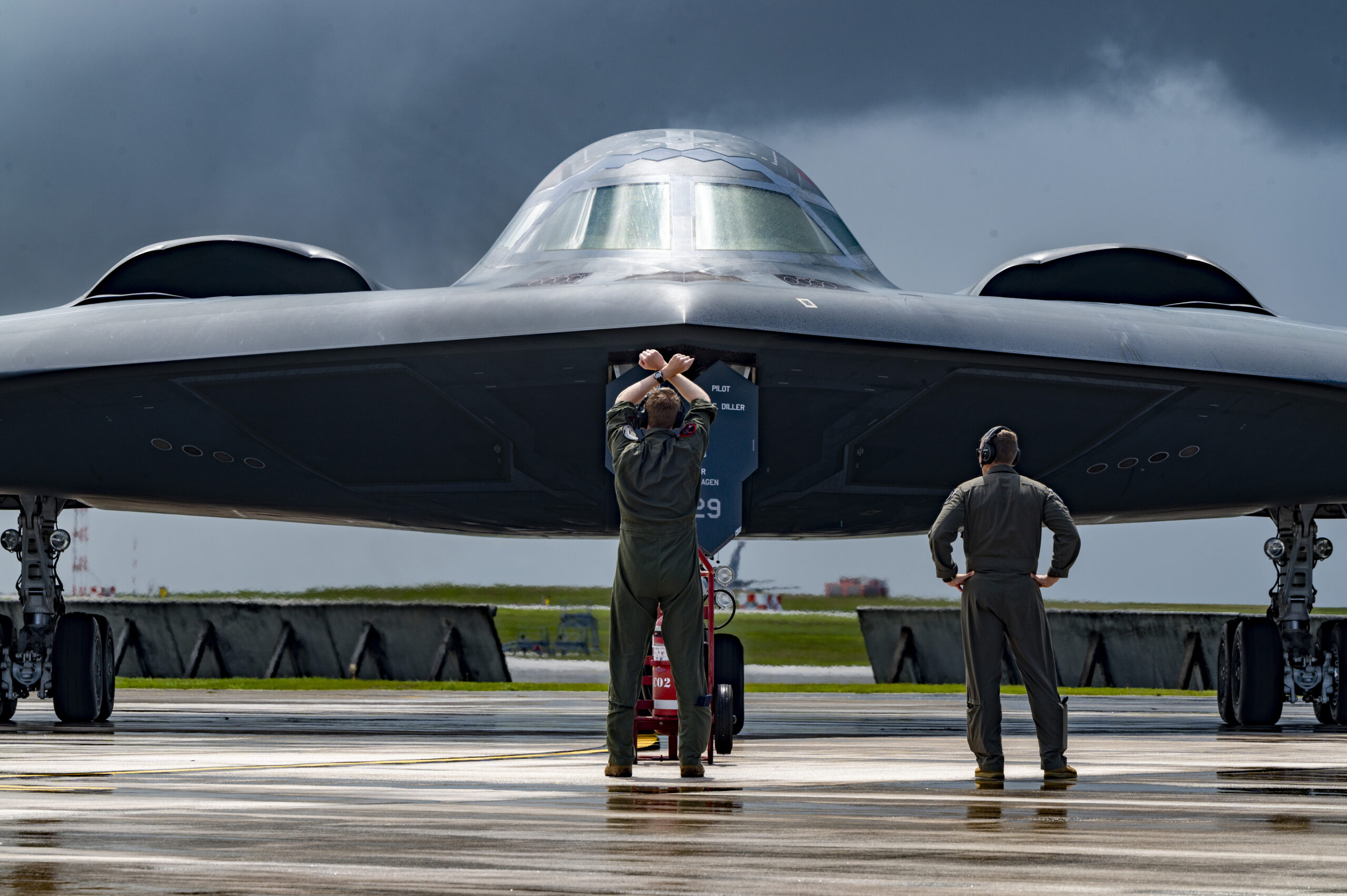
With events stretching across the Pacific, the exercise provided some clarity on the logistical needs to support the joint force. “We’re starting to get into actual application for … the small dispersed locations spread throughout the key terrain in a maritime environment,” Mulvey said. “I think there’s more growth potential for things like this to spread out and then do it in an even greater fashion for future Valiant Shields.”
I MEF (Forward)’s ground command element brought its logistics combat battalion, which he said “provided all the sustainment that they needed.”
In that role, Combat Logistics Battalion 13 served as the Base Operating Support-Integrator, so it handled lodging contracts, medical services, water, food and liaison as well as typical combat service support to the force such as refueling generators and providing power grids. “We offer a connective tissue between units here, starting by receiving them at the port or the airfield,” Lt. Col. Brian McCarthy, CLB-13’s commanding officer, said in a Marine Corps release. The exercise provided relevant training for the battalion leading a 150-member force for exercise Koa Moana 24, according to I MEF.
Another area that Marine Corps officials want to explore further is port authority operations.
“That is truly something that we haven’t played with before – to my knowledge in the Marine Corps – underneath a logistics regiment to come and do those type of operations,” Mulvey said. “So we were charting some new ground.”
CLR-17, operating as the forward MLG for the exercise, reached out to Navy commands in the region, including Cmmander Task Force 76 and the 30th Naval Construction Regiment, which has units that regularly deploy and rotate through the western Pacific. “They put out a composite team that ran the port for us,” he said.
In Palau, Underwater Construction Team 2 managed port operations and led a diving and repair project at Malakal port in Koror. Among the lessons: The senior port authority supporting CLR-17 during Valiant Shield “was heavy on underwater construction and construction capabilities, which was great,” Mulvey said, but they realized they will need more naval cargo handling capability, perhaps something akin to the Army’s single port manager approach. “That’s a growth industry for us. It’s not a capability that the Marine Corps has,” he noted.
Previous iterations of the exercise mainly focused on integrating base operations support for the joint force. With allied forces this year, “we tried to blow out those tasks,” Mulvey added. “We tried to build the framework that if we do need to scale this up, we can do and know at least where to start.”


